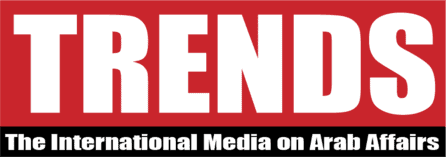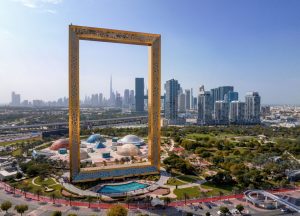Paris, France — Israel and Iran traded deadly fire for a fourth day on Monday in their most intense confrontation in history, fueling fears of a drawn-out conflict that could engulf the Middle East.
The longtime foes have fought a prolonged shadow war through proxies and covert operations, with Israel battling several Iran-backed groups in the region, including Hamas in the Gaza Strip since October 2023.
Here are the latest developments:
– Mounting casualties
In a major campaign launched early Friday, Israeli fighter jets and drones have struck nuclear and military sites in Iran, also hitting residential areas and fuel depots.
Iran’s health ministry says at least 224 people have been killed and more than 1,200 wounded.
Tehran has responded with barrages of missiles and drones that hit Israeli cities and towns, killing at least 24 people and wounding 592 others, according to the prime minister’s office.
Israel has also killed many top military commanders and atomic scientists in Iran as part of an offensive that officials say seeks to end nuclear and missile threats from the Islamic republic.
Israel’s military reported a new wave of incoming missiles targeting the country’s north on Monday evening.
Prime Minister Benjamin Netanyahu, meanwhile, did not rule out killing Iranian supreme leader Ayatollah Ali Khamenei.
“It’s not going to escalate the conflict, it’s going to end the conflict,” he told ABC News when asked about reports that US President Donald Trump vetoed an Israeli plan to kill Khamenei.
– Iran state TV hit
AFP journalists in Tehran heard massive blasts across the city after Israel issued an evacuation order for the northern District 3, home to state broadcaster IRIB, which was hit in an Israeli strike.
IRIB later resumed its live broadcast after it was cut due to the attack.
Defense Minister Israel Katz said his country’s forces had targeted “the propaganda and incitement broadcasting authority of the Iranian regime”.
Iran foreign ministry spokesman Esmaeil Baqaei called the strike a “war crime”, and demanded the UN Security Council take action.
Foreign Minister Abbas Araghchi said Iranian forces would “pummel” Israel until it stopped its attacks, and suggested Trump could halt the strikes with “one phone call”.
“That may pave the way for a return to diplomacy,” he added.
– Israel claims ‘air superiority’ –
The Israeli military said that after a wave of strikes on Monday, its forces had destroyed one third of Iran’s surface-to-surface missile launchers.
According to military spokesman Effie Defrin, “we have now achieved full air superiority over Tehran”.
Reza Sayyad, spokesman for the Iranian armed forces, said their targets in Israel included “sensitive and important” security sites as well as “the residences of military commanders and scientists”.
Among the sites hit in Israel on Sunday was a major oil refinery in the coastal city of Haifa, an Israeli official said after a military censorship gag order was lifted.
Residential areas in both countries have also suffered deadly strikes.
– Diplomacy
The conflict has rapidly escalated despite calls from world leaders to halt the attacks.
China urged Iran and Israel to “immediately” take steps to reduce tensions and “prevent the region from falling into greater turmoil”.
Turkish President Recep Tayyip Erdogan told his Iranian counterpart in a phone call on Monday that Ankara was ready to play a “facilitating role” to end the conflict.
British Prime Minister Keir Starmer said he believed “there’s a consensus for de-escalation” among Group of Seven leaders, who are meeting in Canada.
Trump told reporters at the G7 summit that “Iran is not winning this war, and they should talk… before it’s too late”.
Nuclear negotiations between Tehran and Washington that were set to take place on Sunday had been called off.
– Nuclear sites –
Netanyahu has said the Israeli offensive aims to thwart the “existential” threats posed by Iran’s nuclear and missile programmes.
The fierce bombing campaign came after warnings from the UN nuclear watchdog over Iran’s atomic activities.
Rafael Grossi, head of the UN’s International Atomic Energy Agency (IAEA), said on Monday there was “no indication of a physical attack” on an underground section of Iran’s Natanz uranium enrichment facility, and that radiation levels outside the plant were “at normal levels”.
The IAEA previously said that a key, above-ground component of Iran’s Natanz nuclear site was destroyed.
– Tehran residents flee attacks
Residents of Tehran have fled the Iranian capital in large numbers in the face of Israeli bombardments, creating immense traffic jams on the main road heading north, according to social media content posted on Monday.
Images verified by AFP, shot by a social media user from an overpass, showed near immobile traffic on a Tehran highway heading north with almost no vehicles in the opposite lane.
Israel on Friday launched a surprise aerial campaign targeting sites across Iran, saying the attacks aimed to prevent its archfoe from acquiring atomic weapons — a charge Tehran denies.
The Israeli strikes have so far killed at least 224 people, including top military commanders, nuclear scientists but also civilians, according to Iranian authorities.
Iran launched strikes on Israel in retaliation which so far have killed 24 people, according to Israeli authorities.
Iranian authorities have closed civilian air space until further notice due to the Israel attacks, leaving land routes the only way out of Tehran which has been the main focus of Israeli attacks.
Israel has warned Iranians to stay away from any military infrastructure in a city where the security forces maintain a heavy presence, both overt and covert.
Videos filmed inside Iran and posted by Persian-language TV channels based abroad, such as Iran International and Manoto, as well as widely followed bloggers including Vahid Online, showed long queues of cars barely moving as they tried to leave Tehran.
The congestion appears to be concentrated on Highway 49 which connects Tehran with Chalus on the Caspian Sea in the Mazandaran province.
The region, about 150 kilometers (90 miles) north of Tehran and typically a three-hour drive even in normal times due to the mountain roads, has so far been largely spared.
It is popular with Tehranis for its mild climate, with many maintaining holiday homes there.
Persian-language outlets meanwhile also posted images of hundreds of cars lining roads outside petrol stations in Tehran and its satellite city of Karaj, saying they were filling up ahead of long journeys outside of the city.
While air travel is impossible, Iranians can still in theory cross borders by land to go abroad.
Footage posted on social media, which has not been verified by AFP, showed hundreds queueing at the Bazargan crossing point in western Iran with Turkey close to the eastern Turkish city of Dogubayazit.







